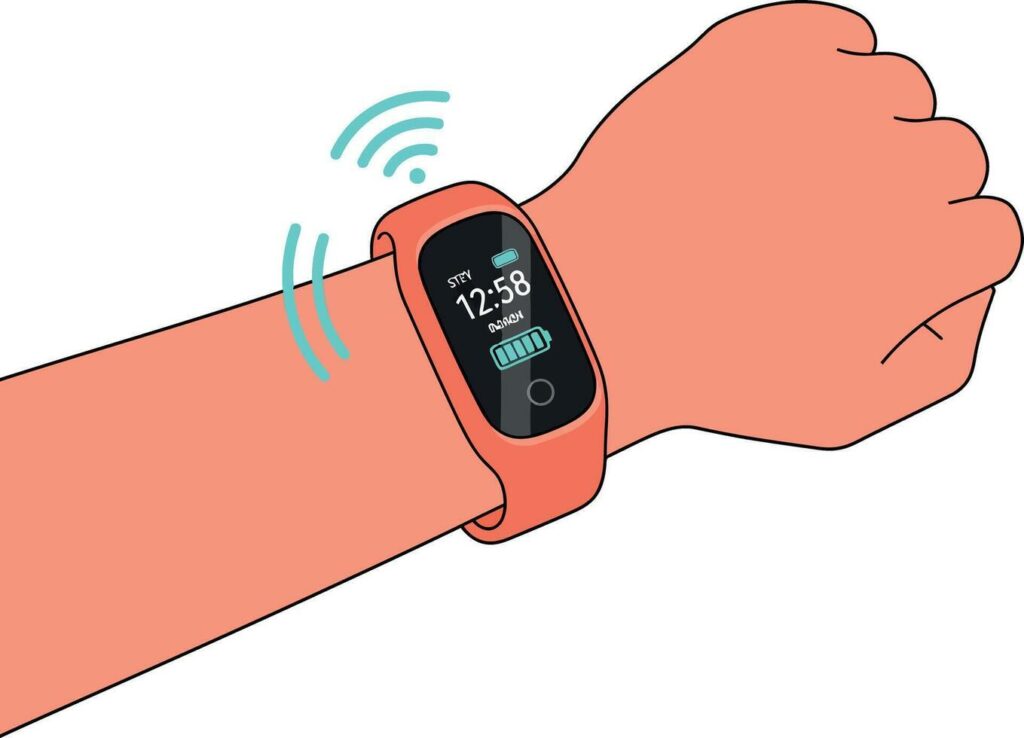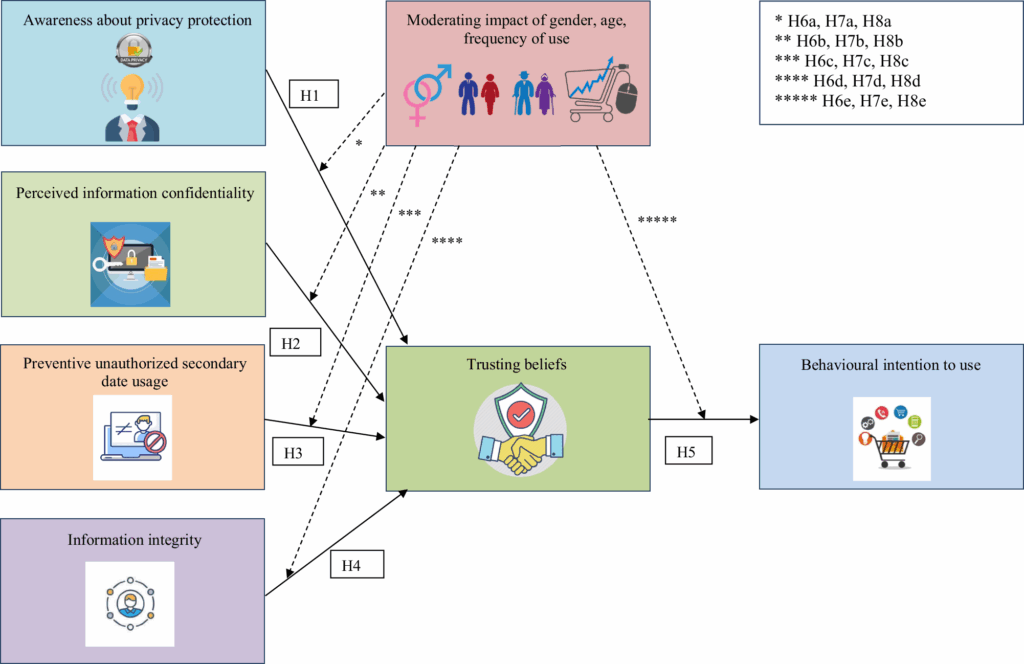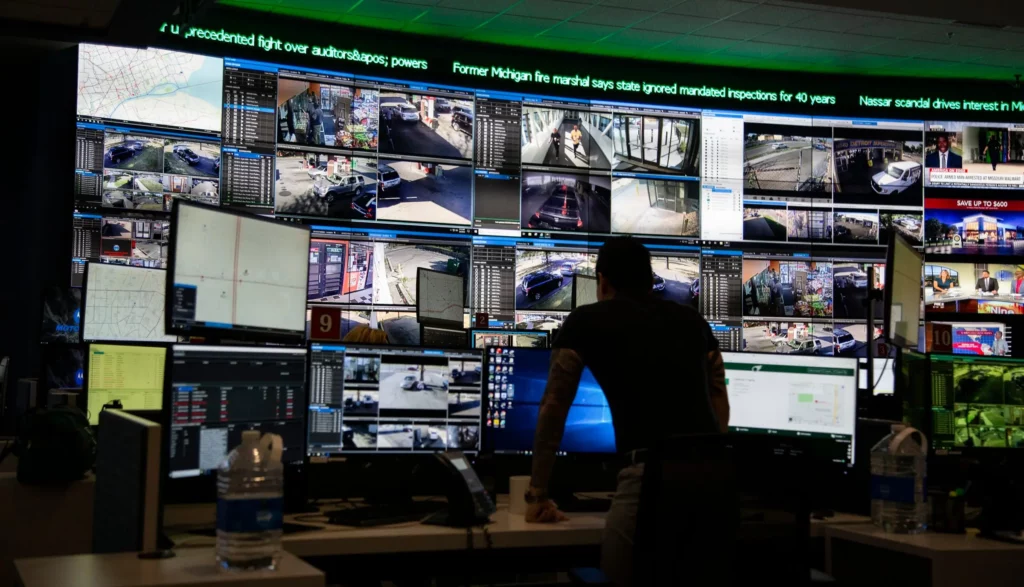Surveillance is a near-constant feature of the modern age. With almost every aspect of our lives being online and devices made by major corporations in our pockets, the fear of being watched is more prevalent than ever.
One of the most dangerous and yet most necessary types of surveillance is in the workplace. With ever-evolving security threats on the horizon, more and more companies are monitoring their employees. However, having this much control over your team can have far-reaching negative effects that every company needs to address effectively.
Table of Contents
Types of Surveillance
Surveillance exists both in the digital and physical spheres. Most of us are being monitored by multiple resources at all times.
Physical Surveillance
Employing cameras, sensors, or human observers to monitor and record activities in physical spaces such as buildings, streets, or public areas, often used for security and law enforcement purposes.
Digital Surveillance
Tracking and monitoring electronic activities such as emails, internet browsing, and computer usage to gather information about individuals’ behaviors and interactions, commonly used for security, marketing, and data analysis.
Government Surveillance
The systematic monitoring and collection of information on individuals’ activities, communications, and movements by government agencies for purposes such as national security, law enforcement, and intelligence gathering.
Workplace Surveillance
Monitoring employees’ actions, communications, and productivity within the workplace environment using technologies like CCTV cameras, computer monitoring software, and access control systems, often aimed at ensuring compliance, productivity, and security.

Mobile Surveillance
Tracking individuals’ locations, activities, and communications through their mobile devices, utilizing GPS technology, cellular networks, and mobile applications, commonly employed for purposes such as location-based services, navigation, and law enforcement investigations.
Social Media Surveillance
Monitoring and analyzing individuals’ activities, interactions, and content shared on social media platforms such as Facebook, Twitter, and Instagram is often used by businesses for marketing research, by law enforcement agencies for intelligence gathering, and by governments for public sentiment analysis.
Biometric Surveillance
Using biometric data such as fingerprints, facial features, or iris scans to identify and track individuals in various contexts such as security checkpoints, border control, and access control systems, offering a high level of accuracy and reliability in identification and authentication processes.
Undercover Surveillance
Employing covert methods, agents, and techniques to gather information and monitor individuals or groups without their knowledge or consent, often used in law enforcement investigations, intelligence operations, and corporate espionage activities.
Digital Surveillance in the Workplace
Digital surveillance in the workplace is aimed at monitoring employees’ electronic activities and behaviors within the organizational environment. Employers utilize technologies such as computer monitoring software, email tracking systems, and network surveillance tools to monitor and record employees’ digital interactions.
From a security perspective, digital surveillance helps mitigate risks associated with data breaches, insider threats, and unauthorized access to sensitive information. By monitoring employees’ digital activities, organizations can identify and respond to security incidents promptly, safeguarding their digital assets and maintaining compliance with data protection regulations.
However, from a control standpoint, digital surveillance can raise concerns about employee privacy, autonomy, and trust. Constant monitoring of emails, internet usage, and computer keystrokes may create a sense of surveillance and undermine employees’ sense of autonomy and trust in the workplace. Moreover, excessive monitoring may lead to feelings of micromanagement and hinder employee morale and productivity.
To address these concerns, organizations should establish clear policies and guidelines regarding digital surveillance, emphasizing transparency, accountability, and respect for employee privacy rights. Additionally, fostering open communication and trust between employers and employees is essential in ensuring that digital surveillance measures are implemented in a fair, ethical, and responsible manner, balancing the need for security with respect for individual privacy and autonomy.
The Downsides
Having extensive control over your employees can erode their sense of privacy and have far-reaching negative effects.
The Erosion of Privacy
The erosion of privacy is a significant concern associated with digital surveillance in the workplace. Constant monitoring of employees’ electronic activities infringes upon their personal privacy. This will create a sense of intrusion and surveillance. Employees may feel that their every move is being scrutinized. This will make them feel a loss of autonomy.
The lack of privacy can have profound effects on employee morale and job satisfaction. When employees feel that their privacy is compromised, they may become disengaged, demotivated, and less committed to their work. It will damage the trust between employees and management, creating a tense and hostile work environment.
The erosion of privacy may extend beyond the workplace, as employees may feel uncomfortable using company-provided devices. They may not want to access company networks or accounts for personal tasks, fearing that their private activities may be monitored or scrutinized.
Decreased Morale
Decreased morale is a consequential repercussion of digital surveillance in the workplace. The constant monitoring of employees’ electronic activities can breed feelings of distrust, anxiety, and disengagement among staff members. When employees perceive that their every action is under scrutiny, it creates a culture of suspicion and unease.
The perception of being constantly monitored can inhibit employees’ sense of autonomy and independence. It stifles creativity and innovation, ultimately lowering productivity and hindering the organization’s ability to adapt.
Decreased morale can manifest in increased absenteeism, higher turnover rates, and poor organizational performance. Employees may feel undervalued and disrespected, which leads to a lack of loyalty and commitment to the organization. In the long run, the negative impact on morale can have profound implications for employee retention, organizational culture, and ultimately, the bottom line.

Stress and Anxiety
When your employees feel like their every move is being watched and scrutinized, they will feel greater stress and anxiety. They are likely to develop feelings of unease, tension, and psychological distress. The fear of surveillance can manifest as anxiety, which leads to symptoms such as irritability, insomnia, and difficulty concentrating.
The pressure of being under surveillance may exacerbate existing mental health issues and contribute to a toxic work environment characterized by mistrust and paranoia. Employees may feel like they need to constantly perform and conform to expectations. They may fear repercussions if their actions are perceived negatively, even when they are in private.
The lack of privacy resulting from digital surveillance can amplify feelings of vulnerability and insecurity. It can increase stress and anxiety levels among employees. The constant surveillance may also lead to a sense of powerlessness and loss of control over one’s own work environment.
Ineffective Management
Management can become ineffective in a highly monitored workplace. When you rely solely on surveillance as a management tool, it can undermine the essential elements of effective leadership, such as trust, communication, and empowerment. Managers who rely heavily on surveillance to monitor and control employees signal their lack of confidence in their ability to lead and manage teams effectively.
An overemphasis on surveillance can lead to a culture of micromanagement, where managers focus more on monitoring individual tasks rather than fostering collaboration, creativity, and autonomy among team members. This stifles innovation, hinders problem-solving, and impedes the development of a dynamic and adaptive workforce.
Ineffective management resulting from excessive reliance on surveillance can lead to disengagement, demotivation, and decreased job satisfaction among employees. When employees feel that their contributions are not valued or that they are not trusted, they may become disenchanted and disinterested in their work. They will have decreased productivity and morale as a result. Ineffective management leads to a decline in employee retention and overall workplace culture.
Creativity Suppression
Your workforce’s creativity is a crucial asset that ensures that your company stays ahead of the curve and is able to stay innovative. When employees feel that their every move is being monitored and scrutinized, it can stifle their creative expression and innovative thinking. The fear of being judged or reprimanded for deviating from established norms or expectations can lead employees to play it safe, avoiding risks and sticking to conventional approaches.
The pressure of constant surveillance can inhibit brainstorming sessions, collaboration, and free-flowing dialogue among team members. Creativity thrives in environments where individuals feel safe to express their ideas and explore new possibilities without fear of judgment or criticism. However, digital surveillance can create a climate of fear and self-censorship, hindering the creative process and stifling innovation.
The lack of privacy resulting from digital surveillance may deter employees from experimenting with new ideas or pursuing unconventional solutions to problems. When employees feel that their creative endeavors are being monitored and evaluated, they may be less inclined to take risks or think outside the box, opting instead for safer, more predictable approaches.
Legal Concerns
Legal concerns arise as a significant consequence of digital surveillance in the workplace. Employers must navigate a complex legal landscape concerning privacy rights, data protection laws, and employee monitoring regulations. Failure to comply with applicable laws and regulations can expose organizations to legal liabilities, fines, and reputational damage.
One primary legal concern is the violation of privacy rights. Employees have a reasonable expectation of privacy in the workplace, and excessive surveillance measures that intrude upon their personal space may infringe upon these rights. This can lead to legal challenges, lawsuits, and damages against the organization.
Digital surveillance raises issues related to data protection and cybersecurity. Employers must ensure that surveillance technologies comply with data protection laws and regulations, such as the General Data Protection Regulation (GDPR) in the European Union or the California Consumer Privacy Act (CCPA) in the United States. Failure to protect employees’ personal data from unauthorized access or misuse can result in severe penalties and legal consequences.
Employers must consider the legality of monitoring specific activities, such as email communication and internet usage. While employers have the right to monitor workplace activities for legitimate business purposes, they must do so in a manner that respects employees’ privacy rights and complies with relevant laws and regulations. Failure to address these legal concerns can have serious implications for organizations, both financially and reputationally.
Employee Turnover
Employee turnover can be a significant consequence of digital surveillance in the workplace. Excessive monitoring can create a culture of distrust and discomfort among employees, leading to decreased job satisfaction and morale. When employees feel that their privacy is being invaded and their every move is being scrutinized, they may become disengaged and disillusioned with their work environment.
The stress and anxiety resulting from constant surveillance can take a toll on employee well-being, leading to burnout and increased turnover rates. Employees who feel overwhelmed or undervalued may seek opportunities elsewhere, contributing to higher attrition rates and talent drain within the organization.

The perception of being constantly monitored may deter prospective employees from joining the organization or accepting job offers, particularly among individuals who prioritize privacy and autonomy in the workplace. This can make it challenging for organizations to attract and retain top talent, hindering their ability to remain competitive in the labor market.
Ultimately, high turnover rates resulting from digital surveillance can have detrimental effects on organizational performance, productivity, and profitability. Organizations must recognize the link between surveillance practices and employee turnover and take proactive measures to address employee concerns, foster a culture of trust and transparency, and create a supportive work environment conducive to employee retention and satisfaction. Failure to address these issues can lead to increased recruitment costs, decreased productivity, and damage to the organization’s reputation.
False Sense of Security
A false sense of security can arise as a significant consequence of digital surveillance in the workplace. While surveillance measures may be implemented with the intention of enhancing security and preventing unauthorized activities, they can create a misleading perception that all security risks have been mitigated.
Employees may erroneously believe that constant monitoring protects them from internal and external threats, leading to complacency and a lack of vigilance. This false sense of security can make employees less attentive to potential security breaches, such as phishing attacks, data leaks, or insider threats, as they assume that surveillance systems will detect and prevent any malicious activities.
Reliance solely on surveillance technologies may overlook other critical aspects of security, such as employee training, access controls, and cybersecurity protocols. Organizations may neglect to implement comprehensive security measures, assuming that surveillance alone is sufficient to safeguard their assets and data.
The presence of surveillance cameras and monitoring software may create a facade of security without addressing underlying vulnerabilities in the organization’s infrastructure or processes. This can lull employees and management into a false sense of complacency, leaving the organization vulnerable to unforeseen security risks and breaches. It is essential for organizations to recognize the limitations of surveillance measures and adopt a holistic approach to security that incorporates multiple layers of protection, including education, training, and proactive risk management strategies.
Balancing Surveillance and Workers Rights
It is crucial for organizations to learn how to protect rights and privacy while they ensure the security and safety of their network.
Establish Clear Policies
Organizations should develop transparent policies outlining the purpose, scope, and limitations of surveillance measures. These policies should clearly communicate the objectives of surveillance, the types of data collected, and the procedures for accessing and using this information.
Limitation
Employers should exercise restraint and discretion when implementing surveillance measures, ensuring that they are proportionate to the identified risks and aligned with the organization’s objectives. Surveillance should only be used when necessary to achieve legitimate business goals, such as security, compliance, or productivity monitoring. Employers should avoid intrusive or excessive surveillance that infringes upon employees’ privacy rights or undermines their autonomy and dignity in the workplace.
Employee Involvement
Organizations should actively involve employees in the decision-making process regarding surveillance practices. This can include consulting with employee representatives, conducting surveys or focus groups to gather feedback, and soliciting input on the design and implementation of surveillance systems. By involving employees in the decision-making process, organizations can promote a sense of ownership and accountability, foster trust and collaboration, and ensure that surveillance practices align with employees’ values, concerns, and expectations.
Education
Employers should provide comprehensive education and training to employees regarding the purpose, benefits, and limitations of surveillance measures. This can include raising awareness about the reasons for implementing surveillance, explaining how surveillance data is collected, used, and protected, and clarifying employees’ rights and responsibilities in relation to surveillance. Employee education can mitigate fears and misconceptions, empower employees to make informed decisions, and promote a culture of transparency, trust, and compliance.
Opt-out Options
Organizations should offer employees the opportunity to opt out of certain forms of surveillance where feasible and appropriate. This can include providing alternative means for employees to perform tasks or access resources without being subject to surveillance, such as using private devices or accessing secure communication channels. Opt-out options allow organizations to respect employees’ privacy preferences and autonomy. It allows them to demonstrate a commitment to balancing security needs with individual rights and freedoms.
For more similar blogs, visit EvolveDash today!
FAQs
- Is workplace surveillance legal?
Workplace surveillance laws vary by country and state. In most cases, employers must inform employees about monitoring policies and comply with privacy laws.
- How can employees protect their privacy at work?
Employees can review company policies, use personal devices for private matters, and limit non-work-related activities on company networks.
- Can surveillance actually improve productivity?
While some employers believe it boosts efficiency, excessive monitoring can harm morale, reduce creativity, and increase stress, leading to lower productivity over time.
- Are there ethical ways to monitor employees?
Yes. Employers should be transparent, set clear guidelines, and use monitoring only when necessary. Respecting privacy while ensuring security is key.
- What should employees do if they feel surveillance is excessive?
Employees can raise concerns with HR, discuss privacy rights, and, if needed, consult legal experts to understand their rights and options.



















